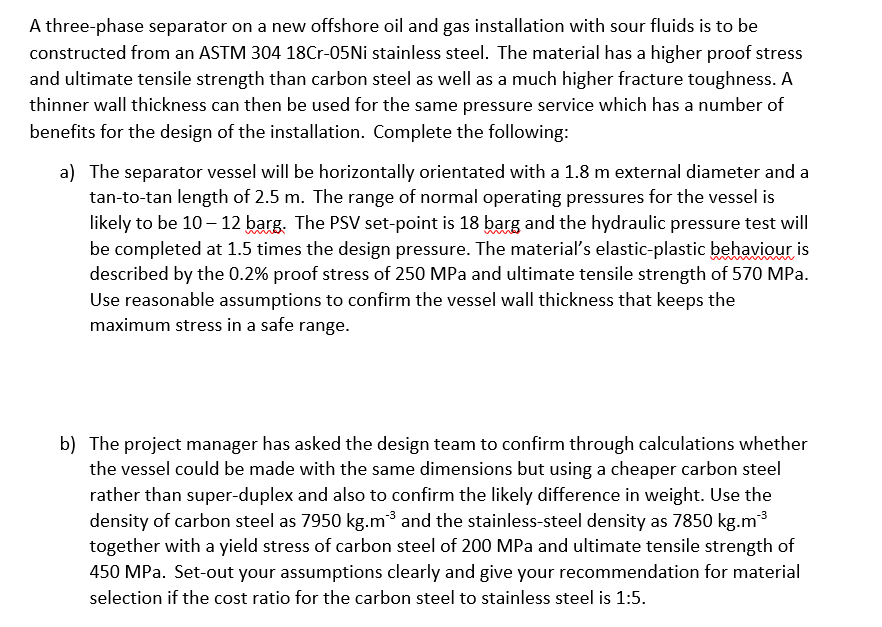(Solved): A three-phase separator on a new offshore oil and gas installation with sour fluids is to be constru ...
A three-phase separator on a new offshore oil and gas installation with sour fluids is to be constructed from an ASTM \( 30418 \mathrm{Cr}-05 \mathrm{Ni} \) stainless steel. The material has a higher proof stress and ultimate tensile strength than carbon steel as well as a much higher fracture toughness. A thinner wall thickness can then be used for the same pressure service which has a number of benefits for the design of the installation. Complete the following: a) The separator vessel will be horizontally orientated with a 1.8 m external diameter and a tan-to-tan length of 2.5 m . The range of normal operating pressures for the vessel is likely to be \( 10-12 \mathrm{barg} \). The PSV set-point is 18 barg and the hydraulic pressure test will be completed at 1.5 times the design pressure. The material's elastic-plastic behaviour is described by the \( 0.2 \% \) proof stress of 250 MPa and ultimate tensile strength of 570 MPa . Use reasonable assumptions to confirm the vessel wall thickness that keeps the maximum stress in a safe range. b) The project manager has asked the design team to confirm through calculations whether the vessel could be made with the same dimensions but using a cheaper carbon steel rather than super-duplex and also to confirm the likely difference in weight. Use the density of carbon steel as \( 7950 \mathrm{~kg} \cdot \mathrm{~m}^{-3} \) and the stainless-steel density as \( 7850 \mathrm{~kg} \cdot \mathrm{~m}^{-3} \) together with a yield stress of carbon steel of 200 MPa and ultimate tensile strength of 450 MPa . Set-out your assumptions clearly and give your recommendation for material selection if the cost ratio for the carbon steel to stainless steel is 1:5.
